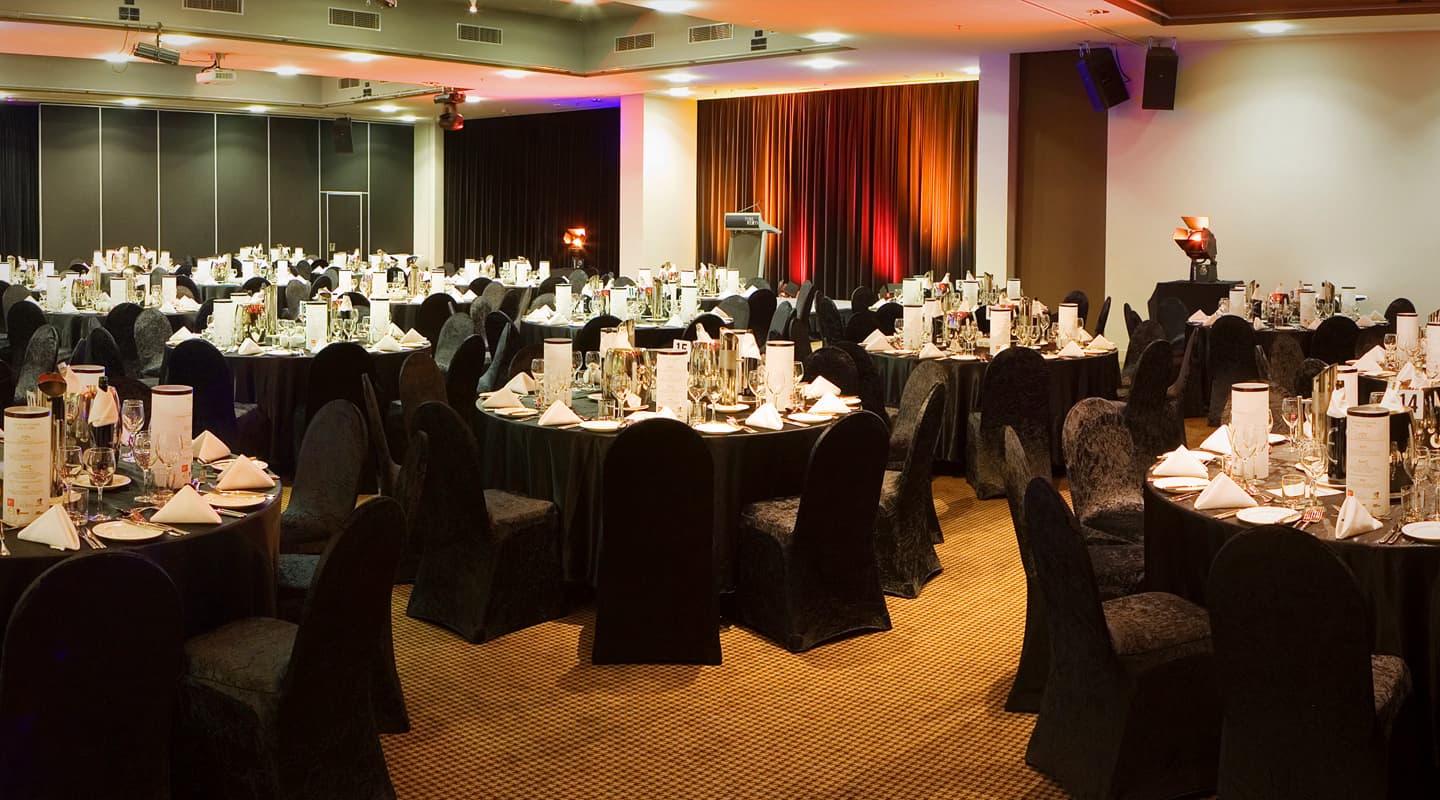
In A Realm Of Its Own
GPT Audio Visual boss, Glen Thurecht, offers this personal account of the rarest of jobs: a five-star hotel in Canberra.
Text:/ Glen Thurecht
Photos:/ courtesy Realm Hotel
The words ‘Canberra’ and ‘modern, world-class accommodation’ aren’t normally heard in the same breath. That was until earlier this year when the Hotel Realm opened its doors. Located near the heart of Canberra’s parliamentary triangle, the Hotel Realm offers five-star facilities that include a large capacity, variable layout function room, ancillary function rooms and six boardrooms. They required a fully-integrated high-end audiovisual system to complement the modern facilities: five-star audiovisuals for a five-star venue.
GPT Audio Visual is a Canberra-based engineering and installations company. We were awarded the contract to provide a complete audiovisual turnkey project design, supply, installation and commissioning. As we incorporate both engineering-based consultancy and installation services this allows us to provide tight integration of the audiovisual system with other services such as architectural, electrical, data, MATV, mechanical and structural engineers. Our engineering consultancy includes both acoustic and audiovisual engineering services, which enabled the Realm systems to be designed in compliance with local environmental noise laws.
THE BRIEF
The brief from the engineering team at Doma Constructions, developers of the Hotel Realm project, was simple: provide audiovisual facilities to allow 80 percent of all bookings for the function rooms to be serviced without the need for external hire equipment, and provide quality sound and vision outputs suitable for a five-star hotel facility. Budget was not initially a design constraint factor. The financial justification for this audiovisual 80/20 rule is based on the savings gained from hiring less equipment and fewer operators. Audiovisual facilities are costed separately when a function room is booked, providing direct income attributed to the system.
THE DESIGN
The audiovisual design philosophy was based on flexibility. The function room space includes four rooms, all in a row, which may be combined to form larger spaces. These can be used in almost any combination and can be configured for presentations to come from any direction within the room.
Facilities incorporated into the room include:
- Extensive function room floor input patch panel system for audio, video, and computer VGA.
- Full matrix of all audio and video, allowing any input to be routed to any output.
- Four radio microphones.
- 16 room speakers.
- Music subwoofers.
- Two fixed projector positions.
- Two projectors, 90-degree swivel mount.
- Six 3.8m (150-inch) motorised screens.
- Four function room touch panel controllers.
- Separate equipment room with full system control.
- Four-channel audio monitoring system in the equipment room.
- Four DVD recorders.
- Audio/video outputs to foyer display screens.
- Audio/video outputs to ancillary Function Rooms 1 and 2.
- Pay TV audio/video input.
- Pay TV audio/video output to TV modulator.
- Four induction loop systems for the hearing impaired.
- Audio DSP control network.
- Two integrated 24 x 8 multicore panel connections, for Function Rooms 2 and 3.
SPEAKERS
The audio design was based on placing one speaker in each corner of each function room, allowing perceived sound direction to match the presenter position. The speaker dispersion and coverage were modelled within the function room spaces to ensure we had the speakers optimally tilted to ensure we were spraying as little sound around as possible. The DAS RF-12 series were selected for sound quality and technical performance. They incorporate a constant directivity horn, a 12-inch (300mm) woofer and birch ply cabinet construction. These have been supplemented in the two centre function rooms by DAS SUB18 active 18-inch (450mm) subwoofers to provide low frequency music content for larger music events. These DAS Reference series speakers also incorporate mounting hardware points. When the function rooms are opened into larger configurations, the speaker systems may be combined to provide greater coverage.
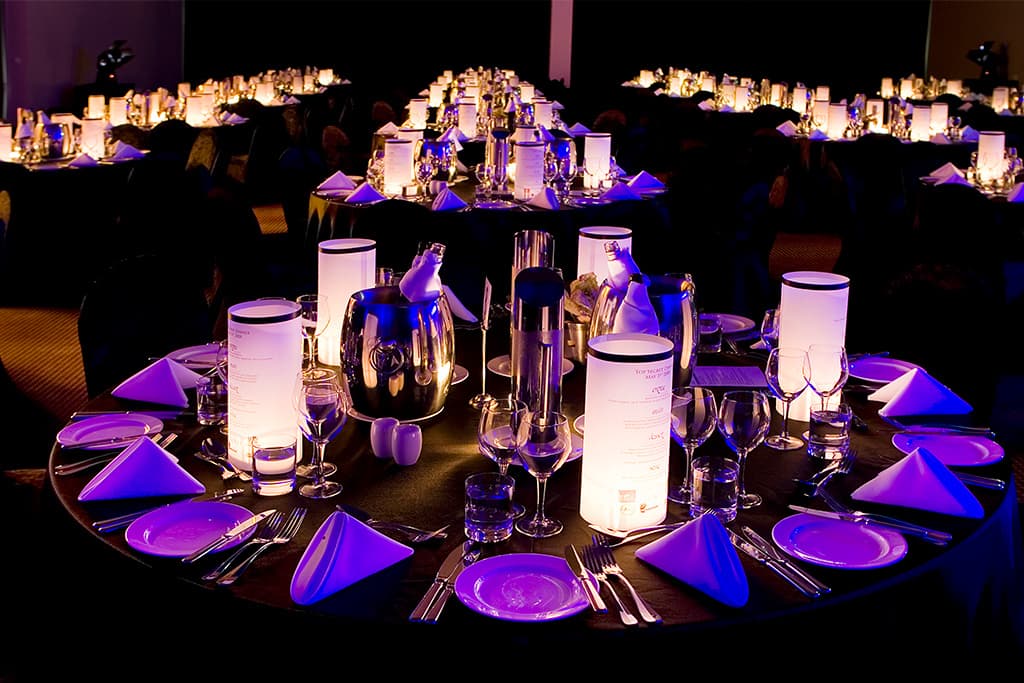
AUDIO SIGNAL PROCESSING
The DSP brains behind the DAS speaker system was the Biamp Nexia, which was selected on the basis of sound quality and boot/shutdown characteristics. It will provide the signal routing and audio delays required for the multiple room speaker configurations. Individual room combinations are stored in memory. Individual speaker tuning, via 31-band EQ or parametric EQ, can be applied to each speaker and altered for different room combinations. All DSPs and end controllers are connected via a dedicated TCP/IP network. A laptop computer can be connected to this network from any point within the function rooms, allowing multiple floor operator positions.
VISION
We provided six large-screen projector systems for the four function rooms. These are based on 3.8m (150-inch) 4:3 motorised projection screens mounted in trapdoor screen enclosures, and ceiling-mounted Mitsubishi XD2000 (3500 ANSI lumens) projectors.
The system design required both composite video and computer VGA signals to be displayed. When the function rooms are combined, multiple video images may be required in each room. This meant we needed to introduce a full video matrix system, which allows any input to be assigned to any projector.
INPUT PANELS
A total of 10 input panels have been provided for additional wired microphones, line level audio, computer video and audio, composite video and the DSP network control connection. The audio DSPs allow a balanced XLR input to be used at either line or microphone levels and phantom power to be applied to any input channel when required.
“”
The lesson to be learnt is that an audio visual system is like a living object … a changing entity that must work closely with people
CONTROL SYSTEMS
The control system is based on touch panels, with a six-inch (150mm) colour touch panel in each of the four function rooms. Operator control has been simplified on these control panels, allowing only selection of audio/video sources and control of audio volumes. The panels change to reflect the function room configuration and provide the appropriate controls for the selected arrangement.
An additional control panel has been provided in the equipment room to enable full control of all room functions. An active Biamp Nexia DSP control interface is also provided to allow control of all system audio processing and routing functions.
AUDIO INDUCTION LOOP
Induction loops for the hearing impaired have been provided in each of the four function rooms, as required by the Building Code of Australia (AS1428). Each room has an under-carpet flat cable loop driven by a GPT300R-II induction loop power amplifier in the equipment room.
INPUTS & OUTPUTS
Linked via their NexLink ports, four Nexia CS 10-input/six-output DSP processors were configured as a 40-input/24-output audio DSP matrix. Composite video is routed via a Creator AV1616 (16×16) matrix. The VGA (RGBHV) signals from computers are routed through a Creator RGB1608 (16-in x 8-out) matrix with a channel bandwidth of 350MHz. Both composite and VGA feeds are supplied to each projector, with signal selection undertaken at the projector head.
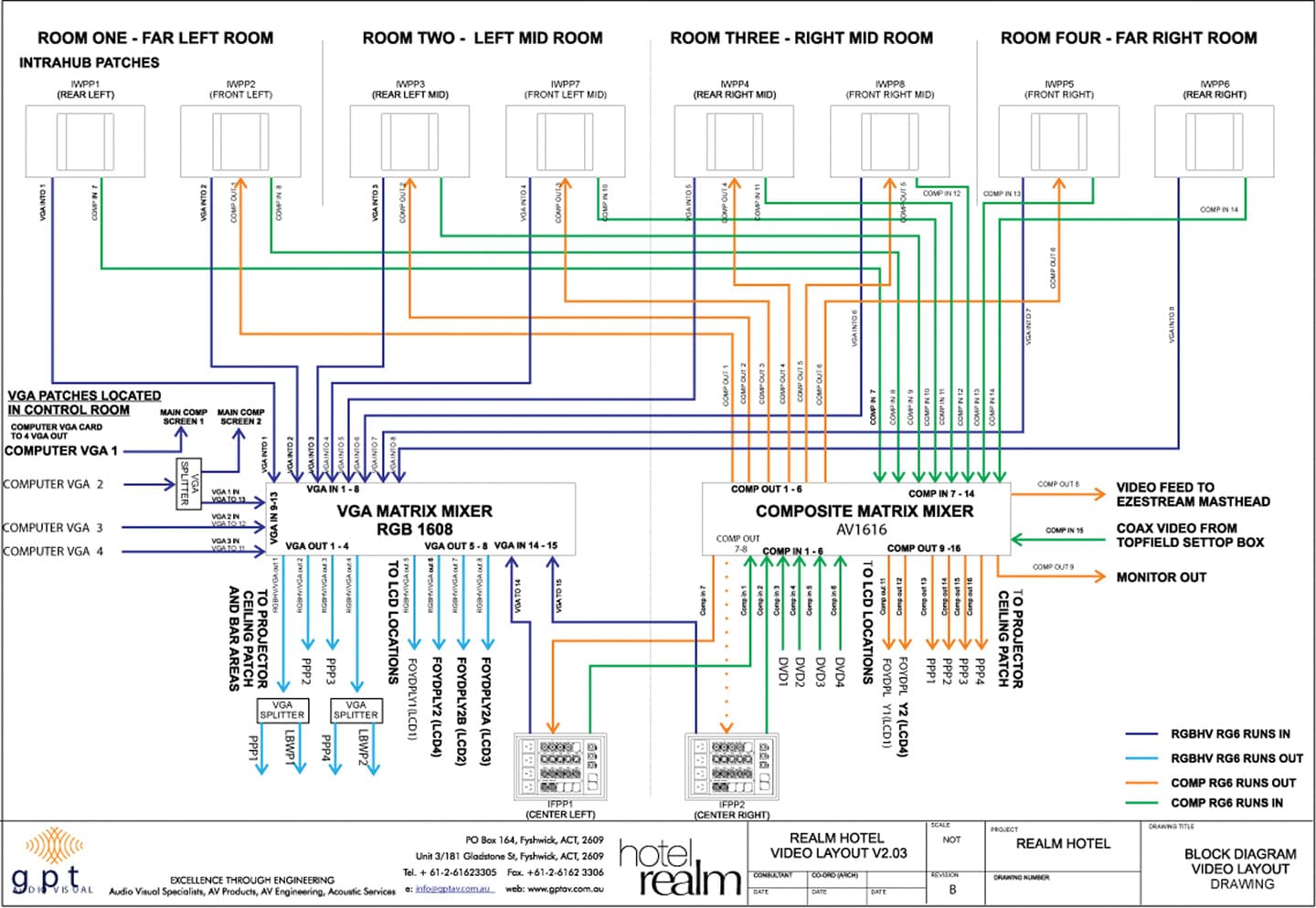
INSTALLATION & COMMISSIONING
All microphone and balanced line-level cable runs are ‘star quad’ shielded, twisted-pair cable to minimise levels of EMI-injected hum and buzz (50Hz and 100Hz). All video signals are distributed via quad-shielded RG6 cables to minimise injected EMI. The DSP’s dedicated IP network enabled speaker tuning to be undertaken in each of the function rooms via a laptop controller.
SYSTEM LIFECYCLE & HUMAN INTERFACE
The system has been in operation for some time now and while the equipment is operating well and offers full functionality, a study of function room bookings indicated that many more bookings were accessing external audiovisual hire equipment than predicted by the 80/20 rule. It turns out that many of the function bookings included external equipment hire which could easily be handled by the ‘in-house’ system.
Here we found an issue that confronts many large systems, where both marketing and support operators require knowledge of what the system is capable of. Audiovisual hire companies also need to be ‘integrated’ into systems operations. However, outside technicians may not know the facilities available within the space or how to operate it. Often their solution is to provide more hire equipment (which they’re familiar with), and interface it to the in-house system in the simplest, lowest-level way.
This conflict of interest may be addressed by the provision of audiovisual systems knowledge to the facilities management through in-house staff training or provision of technical personnel. GPT Audio Visual now supplies a support technical service that addresses this issue. We have also conducted further in-house training to ensure management are aware of the system’s capabilities. They’re now confident they can meet the 80/20 target.
The lesson to be learnt from this is that an audiovisual system is like a living object. As pretty as it is, it will die a sad death if not treated as a living, changing, entity that must work closely with people. Conversely, if you give your system the flexibility to grow and take the time to really get to know it, you can have a match made in heaven.
EQUIPMENT SCHEDULE
16x DAS REF-12 two-way, 12-inch speakers
8x IS600 Australian Monitor stereo power amplifier, 300W RMS/Channel, 8Ω
2x DAS Subwoofer, 18-inch (450mm) active (500W)
18x DAS REF Series speaker mount
4x Biamp Nexia CS DSP processor, 10-input/6-output
1x High Definition television receiver
4x Pioneer combination DVD/CD Player
6x Vogel’s projector ceiling patch mount
10x Active audio patch panel plates
4x GPT300R 300VA induction loop power amplifier
20 x Video patch panel plate — ceiling & wall/floor
1 x 16 x 8 VGA matrix creator
1 x 16 x 16 composite matrix creator
8x Screen Technics 150-inch (3.8m) motorised screen
2x Equipment Rack, 42RU
2x Power distribution with line filtering
4x ComBox six-inch (150mm) Joey colour touch screen controller
1x ComBox 10.4-inch (264mm) DaVinci colour touch panel controller
1x Theatre Commander
10x IR coupler
10x Smart relay
4x Joey wall enclosure
4x AKG WMS 450 radio microphone receiver, with handheld microphone
2x AKG WMS 450 lapel radio transmitter, with microphone
PROJECT TEAM
Project Manager: Duncan Amos
Design Engineer: Glen Thurecht
Site Manager: Ben McGregor


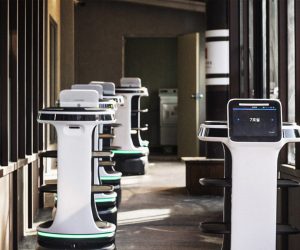



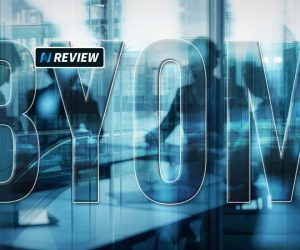
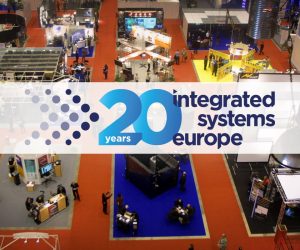


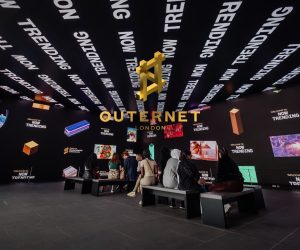




RESPONSES